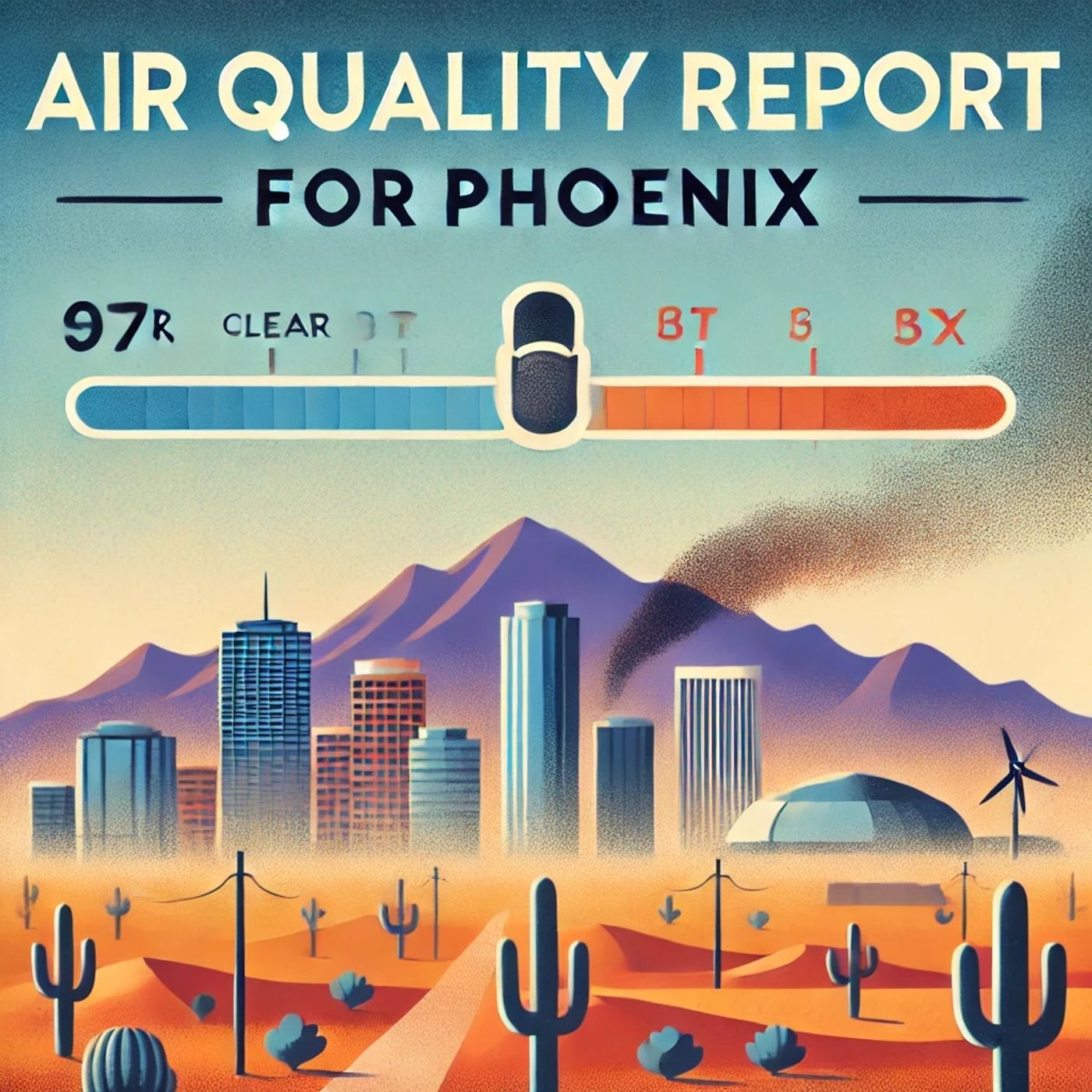Listen "Desert City Battles Dust and Ozone: Phoenix Grapples with Air Quality Challenges"
Episode Synopsis
I'm unable to provide real-time internet data or updates. However, I can provide a general overview of factors affecting air quality in Phoenix and mention some typical concerns and trends.Phoenix, Arizona, is situated in the southwestern U.S. and is known for its sprawling metropolitan area surrounded by desert landscapes. The city's air quality is influenced by various factors including geography, weather patterns, and human activities.One of the primary pollutants affecting Phoenix's air quality is particulate matter, specifically PM10 and PM2.5. These particles come from dust storms, construction activities, vehicle emissions, and industrial operations. Due to its location in a desert region, Phoenix frequently experiences dust storms, particularly during the summer months. These storms, also called haboobs, can significantly elevate particulate levels, posing health risks to residents.Ozone is another significant concern in the Phoenix area. It forms when pollutants emitted by cars, power plants, industrial boilers, refineries, and other sources react chemically in the presence of sunlight. The region's hot and sunny climate is conducive to the formation of ground-level ozone, especially during summer months. This type of ozone can exacerbate respiratory conditions and is particularly harmful to children, the elderly, and those with preexisting health issues.The meteorological conditions in Phoenix also play a critical role in air quality. The city often experiences temperature inversions, where a layer of warm air traps pollutants close to the ground, preventing them from dispersing and leading to higher concentrations of pollutants. Additionally, Phoenix's growing population and reliance on automobiles contribute to increased emissions, further affecting air quality.Efforts to manage and improve air quality in Phoenix involve stringent regulations on industrial emissions, promoting public transportation, and encouraging citizens to adopt environmentally friendly practices, such as carpooling and using less polluting vehicles.Residents can track the current air quality through resources like the Air Quality Index (AQI) provided by the Environmental Protection Agency or local environmental agencies. This index rates air quality on a scale from good to hazardous, offering guidance on outdoor activities based on current pollution levels.Public health advisories are often issued when pollutant levels are expected to reach unhealthy thresholds. On such days, individuals are encouraged to minimize outdoor activities, especially vigorous ones, and to stay informed about air quality forecasts.Understanding these factors and the measures in place to improve air quality can help residents make informed decisions and contribute to a healthier environment in Phoenix.This content was created in partnership and with the help of Artificial Intelligence AI
More episodes of the podcast Phoenix Air Quality Report - Daily
Phoenix Enjoys Excellent Air Quality Today
23/08/2025
 ZARZA We are Zarza, the prestigious firm behind major projects in information technology.
ZARZA We are Zarza, the prestigious firm behind major projects in information technology.
